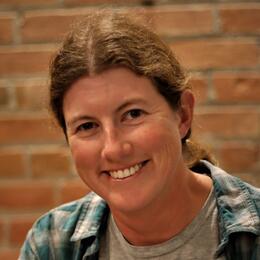The Black-bellied Plover, an Arctic breeder, is sometimes seen on its wintering grounds in breeding plumage. / Lindsay Addison
Since 1974, professional scientists and volunteers have been monitoring shorebird populations through the International Shorebird Survey. Carried out during spring and fall migration, these surveys provide snapshots of bird populations, and over time they can be analyzed to detect trends.
The Manomet Center for Conservation Sciences, which coordinates the survey, recently announced the resultsof a statistical analysis of over 80,000 surveys from 1974 to 2009 at more than 2,000 locations throughout the U.S. (To read more about the report, go to this eBird page and click on ISS Newsletter 2011 at the bottom of the page.) The analysis provided population trend data for 41 species of shorebirds and found downward trends for 23 species, including the Black-bellied Plover, an often-seen wintering bird in North Carolina. Of these, five species, including the Red Knot and Long-billed Curlew, are experiencing significant declines.
However, for the remaining 18 species, the trend was positive. Five species were found to be increasing significantly, including the American Oystercatcher, which has been the focus of increased study and protection throughout its range, including here in North Carolina. Other species, such as the Semipalmated Plover, which winters in North Carolina and breeds in the Arctic, were not previously known to be increasing in number.
The long-term data collected by thousands of volunteers participating in the International Shorebird Survey provides resource managers with the information they need to direct conservation efforts where they are most needed, and as in the case of the American Oystercatcher, that information can be used to make positive changes on a broad scale. To learn more about the International Shorebird Survey, visit its website.
-- Lindsay Addison




